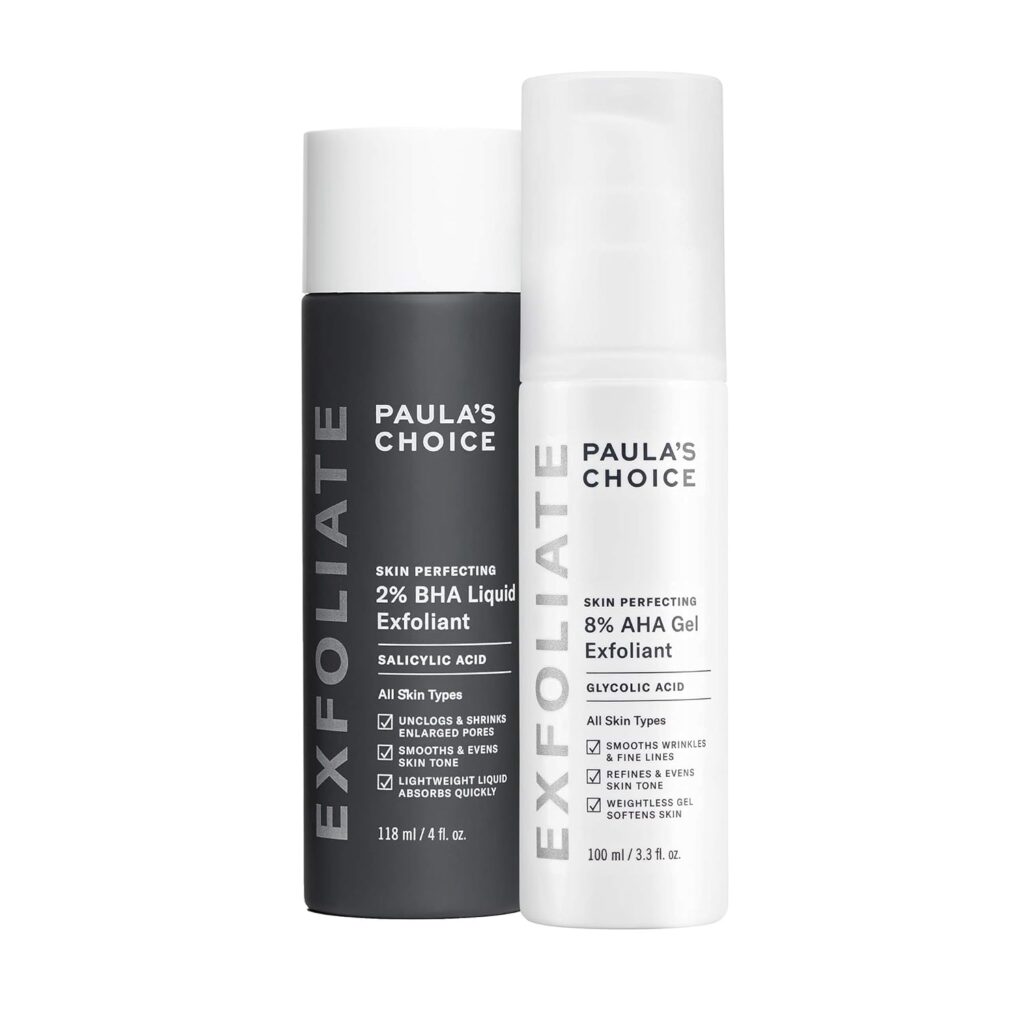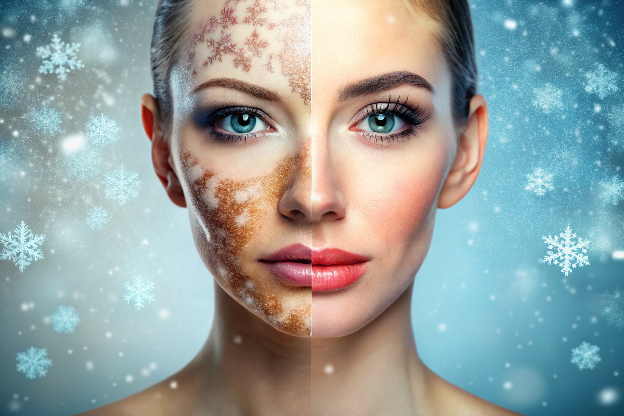
Introduction
Creating a skincare routine that works can be daunting, especially with so many products and steps to choose from. But having a skincare routine tailored to your skin type and concerns can bring transformative results—whether that’s clearer skin, a brighter complexion, or reduced signs of aging. This guide will walk you through the key elements of building an effective skincare routine, including how to choose the right products and how to establish consistency for long-lasting results.
Let’s get started on a skincare routine that’s both practical and impactful.
1. Understanding Your Skin Type: The Foundation of an Effective Skincare Routine
Knowing your skin type is the foundation of an effective skincare routine. Here’s how to identify yours:
- Oily Skin: Characterized by a shiny appearance, especially on the T-zone. Oily skin is prone to blackheads, whiteheads, and breakouts.
- Dry Skin: Feels tight and may appear flaky or rough. Dry skin benefits from richer creams and hydrating serums.
- Combination Skin: A mix of oily and dry areas, typically with an oily T-zone and dry cheeks. It requires balancing products that address both concerns.
- Sensitive Skin: Often reacts with redness, itching, or burning when exposed to certain ingredients. Sensitive skin needs gentle, fragrance-free products.
Quick Tip: If you’re unsure of your skin type, try consulting with a dermatologist or using a simple blotting sheet test to determine oil production levels.
2. The Essential Steps for a Basic Skincare Routine
While skincare routines can vary in complexity, a basic routine includes these essential steps:
- Cleansing: Cleanse your skin twice daily—morning and evening. Look for a gentle, sulfate-free cleanser that won’t strip your skin’s natural oils. Cleansing removes dirt, oil, and pollutants, which is crucial for keeping your pores clear and preventing breakouts.
- Moisturizing: Hydration is key to maintaining your skin’s barrier. Moisturizers come in different formulations: creams, lotions, gels, and balms. Choose a moisturizer based on your skin type—gel-based for oily skin, cream-based for dry skin, and lightweight lotions for combination skin.
- Sunscreen: Applying sunscreen every day, even on cloudy days, is critical. UV exposure causes premature aging, sunburn, and increases the risk of skin cancer. Dermatologists recommend SPF 30 or higher, ideally a broad-spectrum formula that protects against both UVA and UVB rays.
A simple yet consistent routine with these three steps can make a significant difference over time.

3. Adding Targeted Treatments: Serums, Exfoliants, and Masks
Once you’ve established a basic routine, consider adding targeted treatments to address specific skin concerns:
- Serums: Serums are lightweight, fast-absorbing products with concentrated active ingredients. Common serums include:
- Vitamin C: An antioxidant that brightens skin and fights signs of aging.
- Hyaluronic Acid: A hydrating ingredient that binds moisture to the skin, ideal for dry or dehydrated skin.
- Niacinamide: Helps with redness, uneven tone, and controls oil production.
- Exfoliants: Exfoliating once or twice a week can help remove dead skin cells, allowing other skincare products to absorb more effectively. There are two types:
- Physical Exfoliants: Scrubs that manually slough away dead skin. These can be too abrasive for sensitive skin.
- Chemical Exfoliants: Acids like AHAs (alpha hydroxy acids) and BHAs (beta hydroxy acids) that dissolve dead skin cells. These are gentler and more effective for long-term use.
- Face Masks: Use a mask once a week for a skin boost. Clay masks are great for oily skin, hydrating masks benefit dry skin, and sheet masks can provide a quick infusion of moisture.

4. Morning vs. Evening Skincare Routines: A Simple Breakdown
A well-rounded skincare routine adapts to both morning and evening needs. Here’s a simple breakdown:
- Morning Routine:
- Cleanse: Use a mild cleanser to start your day fresh.
- Serum: Apply a vitamin C serum to protect against environmental damage.
- Moisturize: Hydrate your skin, preparing it for makeup if you wear any.
- Sunscreen: Finish with sunscreen to shield your skin from UV damage.
- Evening Routine:
- Double Cleanse: Use a cleansing oil or balm to remove makeup and SPF, followed by a regular cleanser.
- Exfoliate: (2-3 times a week) Exfoliate to clear away dead skin cells.
- Treat: Apply treatments like retinol, niacinamide, or any acne treatments.
- Moisturize: Finish with a thicker moisturizer or night cream.
Following a morning and evening routine helps balance skin and keep it looking fresh and rejuvenated.
5. Choosing the Right Skincare Products for Your Routine
When selecting skincare products, consider both ingredients and formulations suitable for your skin type:
- Ingredients to Look For:
- Oily Skin: Salicylic acid, niacinamide, tea tree oil.
- Dry Skin: Hyaluronic acid, ceramides, glycerin.
- Sensitive Skin: Aloe vera, chamomile, fragrance-free options.
- Formulation Types:
- Gels: Lightweight and ideal for oily or combination skin.
- Creams: Thicker and more moisturizing, suitable for dry skin.
- Oils: For extra hydration, best for dry or mature skin.
If you’re new to a product, always do a patch test on a small area of skin to check for any adverse reactions.
6. Why Consistency is Key in Skincare
Consistency in skincare is essential for seeing results. While some products, like moisturizers, show immediate effects, others (like retinoids or vitamin C serums) may take weeks to deliver noticeable changes. By sticking with a routine, your skin will gradually adjust, and you’ll achieve more sustainable, long-lasting improvements.
7. The Importance of Lifestyle in Skincare Health
Healthy skin doesn’t depend only on what you apply topically. Lifestyle habits play a critical role in how your skin looks and feels. Here’s a closer look:
- Diet: Eating a balanced diet rich in antioxidants, healthy fats, and vitamins can improve skin clarity and radiance. Foods like berries, leafy greens, nuts, and fish are beneficial for skin health.
- Hydration: Drinking enough water aids in skin hydration and reduces dullness. Aim for at least eight glasses of water per day.
- Sleep: Quality sleep allows the body to repair and regenerate. Poor sleep can lead to puffiness, dark circles, and a dull complexion.
- Stress Management: Chronic stress can trigger breakouts and worsen skin conditions like eczema or psoriasis. Practices like mindfulness, exercise, and adequate rest can help keep stress at bay.
8. Common Skincare Mistakes to Avoid
Many people make mistakes when it comes to skincare. Here are a few to be mindful of:
- Over-Exfoliating: Exfoliating too frequently can lead to irritation, redness, and sensitivity.
- Skipping Sunscreen: Sunscreen should be applied daily, even indoors, as UV rays can penetrate windows.
- Switching Products Too Quickly: Allow each product a few weeks to show its effects before deciding if it works for you.
- Using Products Not Meant for Your Skin Type: Using the wrong product can worsen issues, like breakouts or dryness.
Avoiding these mistakes will keep your skincare routine effective and gentle on your skin.
Conclusion
Developing an effective skincare routine isn’t just about looking good—it’s about taking steps to care for yourself, which in turn boosts confidence and well-being. By understanding your skin type, sticking to the basics, and being consistent, you’ll be well on your way to achieving a healthy, glowing complexion. A thoughtful skincare routine is an investment in yourself, helping you put your best face forward every day.
Are you ready to start your skincare journey?
Try adding just one new step to your routine this week, and see how it impacts your skin.


